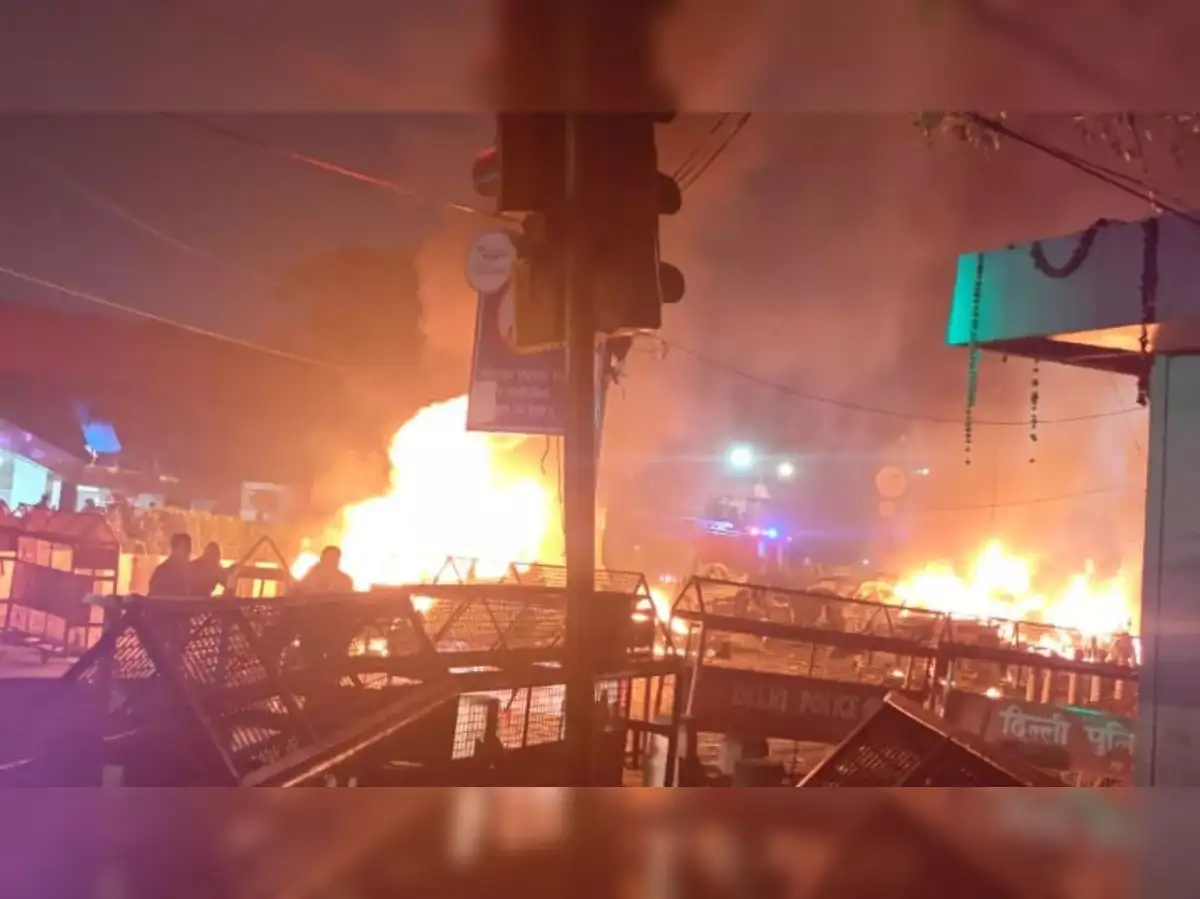The blast occurred in a car near gate number 1 of the Red Fort Metro station, after which three to four vehicles also caught fire
10 November 2025
The Incident: What Happened
On Monday evening, November 10, 2025, a blast occurred in a car parked near Gate No. 1 of the Red Fort Metro Station (also called Lal Qila Metro Station) in central Delhi.
According to the Delhi Fire Service (DFS), the call came at 7:05 PM, at which time seven fire-tenders were dispatched to tackle the fire.
Following the explosion in the car, three to four other vehicles caught fire and sustained damage in immediate proximity.
Early reports confirm one person dead, with several others reported injured and shifted to hospital.
Security agencies have issued a high alert across Delhi, given the sensitive location and nature of the blast.
Location & Immediate Response
The location: Gate No. 1 of the Red Fort Metro Station, in the Old Delhi / Chandni Chowk area — a dense, historic section of Delhi with heavy pedestrian and vehicular traffic.
The fire-department and police responded swiftly. Officials say the smoke and flames spread quickly to nearby parked vehicles, which complicated containment.
Emergency services cordoned off the area, diverted traffic, and began preliminary investigations into whether this was an accident, a deliberate act, or terrorism-related.
Investigation & Security Implications
At this stage, authorities have not publicly confirmed the exact cause of the blast. There are multiple possibilities under active review:
-
Accidental explosion (fuel leak, short circuit, tyre/underground gas leak)
-
Criminal act (vehicle bomb or targeted attack)
-
Terrorism (given the proximity to a sensitive heritage and metro zone)
Given the Lt. Governor’s High-Alert declaration and involvement of specialized units such as the Special Cell, the security services are treating it as a high-risk incident until proven otherwise.
Nearby CCTV, vehicle-forensics and witness interviews are expected to play a crucial role. Given the damage to vehicles and public panic, the metro station and surrounding roads were temporarily shut or access limited.
Why It Matters
-
Strategic location: The Red Fort region is sensitive — both historically and in terms of urban security. An explosion here has symbolic and practical implications.
-
Urban vulnerability: In crowded, mixed use zones where heritage sites, metro stations, and traffic converge, such incidents highlight the challenge of protection and emergency responsiveness.
-
Public confidence: Incidents like this raise questions about vehicle screening, parking security, and emergency protocols in high-traffic areas.
-
Political and security optics: In the broader national context — especially as unrest or terror modules are being busted elsewhere — a blast in Delhi yields immediate headlines, possibly shifting security focus and resources.
What We Know & ❓ What We Don’t
Known:
-
Time: evening of November 10, call logged ~7:05 PM.
-
Location: Car near Gate No. 1, Red Fort Metro Station.
-
Outcome: One confirmed dead; multiple vehicles on fire; major fire-response deployment.
-
Alert: High-alert declared across Delhi; security heightened
Not yet known:
-
Exact cause of explosion (accident vs deliberate).
-
Identity of deceased and extent of other casualties.
-
Whether any metro operations were disrupted or how long restrictions will last.
-
Whether this blast is connected to any wider terror module or criminal conspiracy.
Contextual Linkages
It is notable that on the same day, a major terror-module operation was reported, with arrests in Faridabad and seizures of 360 kg explosives linked to groups like Jaish‑e‑Mohammed and Ansar Ghazwat‑ul‑Hind, spanning several states. While no official connection has been established, the coincidence adds a heightened layer of alert.
(See cited reports)
👁️ What to Watch For — Next Steps
-
Official cause and motivation for the blast (expected via police briefing).
-
Updates on casualty figures, hospital admissions and identities.
-
Metro / traffic disruption updates, and how this affects Old Delhi mobility.
-
Whether security agencies link this to larger terror or sabotage networks.
-
Government and municipal responses (parking regulation review, heritage-site security audit).
Conclusion
The car blast near the Red Fort Metro Station in Delhi is a stark reminder of how urban centers remain vulnerable to sudden violence or accidents, especially in heritage-rich, highly trafficked zones. As the investigation unfolds, the challenge will lie not only in establishing cause and accountability, but in restoring public confidence and normalcy.
Authorities face the dual tasks of ensuring swift forensic clarity and maintaining visible deterrence, all while keeping critical urban arteries running. For Delhi’s citizens and commuters, the signal is clear: safety in public spaces is a collective and continuous endeavour.



